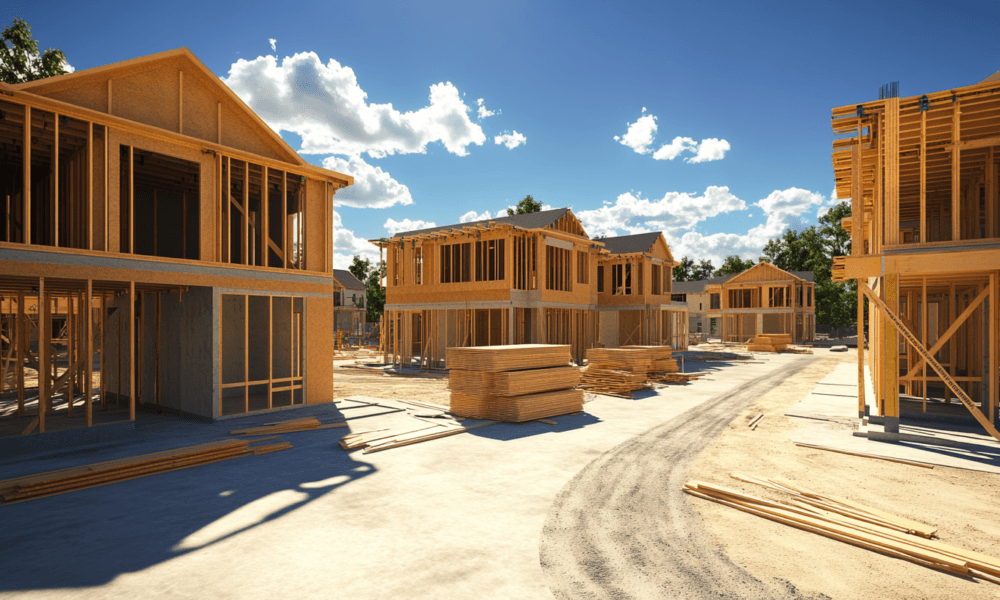Affordable Housing Crisis: Why Home Prices Are Soaring Globally in 2024
The dream of owning a home has become increasingly elusive for many people around the world. In 2024, the affordable housing crisis has reached alarming levels, with home prices soaring globally and putting significant financial strain on individuals and families. This surge in home prices is driven by a complex interplay of economic, social, and environmental factors that have converged to create a challenging situation for prospective homeowners. In this article, we will explore the reasons behind the rising cost of housing, its impact on society, and potential solutions that can help address this pressing issue.
The Affordable Housing Crisis: An Overview
The affordable housing crisis refers to the growing disparity between the cost of housing and the ability of individuals to afford it. The crisis is characterized by an imbalance in the supply and demand for homes, leading to a significant increase in property prices and rental costs. This crisis affects people from all walks of life, but it disproportionately impacts low-income families, young people, and first-time homebuyers who struggle to compete in an increasingly competitive housing market.
Factors Driving the Surge in Home Prices Globally
1. Supply and Demand Imbalance
One of the primary drivers of the affordable housing crisis is the imbalance between the supply of available homes and the growing demand for housing. Several factors contribute to this imbalance:
- Population Growth: The global population continues to grow, and urbanization trends have led to increased demand for housing in cities. This surge in demand has not been matched by an adequate increase in housing supply.
- Limited Land Availability: In densely populated urban areas, there is limited land available for new housing developments. This scarcity of land drives up the cost of real estate, contributing to higher home prices.

2. Rising Construction Costs
The cost of building new homes has also increased significantly, contributing to the soaring prices of housing. Rising construction costs are driven by several factors:
- Labor Shortages: The construction industry is facing a shortage of skilled labor, leading to increased labor costs. This shortage has been exacerbated by the pandemic and changing workforce dynamics.
- Material Costs: The cost of building materials, such as lumber, steel, and cement, has risen due to supply chain disruptions, inflation, and increased demand. These rising material costs are directly impacting the cost of new homes.
3. Low Interest Rates and Investment Demand
Low interest rates, while intended to stimulate economic growth, have also contributed to the rise in home prices. With borrowing made more affordable, more people are able to take out mortgages, increasing the demand for homes.
- Increased Investor Activity: Low interest rates have also attracted investors to the real estate market, leading to increased competition for homes. Many investors are purchasing properties as assets, driving up prices and reducing the availability of affordable housing for regular buyers.
4. Government Policies and Zoning Restrictions
Government policies and zoning restrictions can significantly impact the availability and affordability of housing. In many countries, zoning laws limit the types of housing that can be built in certain areas, leading to a shortage of affordable options.
- Restrictive Zoning: Zoning laws often favor single-family homes over multi-unit buildings, limiting the availability of high-density, affordable housing options. This restriction contributes to the scarcity of housing and drives up prices.
- Tax Incentives for Investors: In some regions, tax incentives favor real estate investors, which encourages them to purchase multiple properties. This further reduces the supply of homes available for first-time buyers and contributes to rising prices.
5. Global Economic Uncertainty
Global economic uncertainty has led many people to view real estate as a safe investment. As a result, there has been an influx of capital into the housing market, which has driven up prices.
- Foreign Investment: In some cities, foreign investors are buying up properties as a way to protect their wealth from economic instability in their home countries. This trend has made it difficult for local buyers to compete, further exacerbating the affordability crisis.
6. Pandemic-Related Changes
The COVID-19 pandemic has had a profound impact on the housing market. Many people began seeking larger homes or properties in suburban or rural areas due to the rise of remote work and the need for more space.
- Increased Demand for Space: As people spent more time at home, the demand for larger living spaces increased. This shift in preferences has put pressure on the housing market, particularly in suburban areas, leading to price hikes.
- Supply Chain Disruptions: The pandemic also disrupted global supply chains, leading to delays in construction projects and increased costs for materials. These disruptions have contributed to the rising cost of housing.

The Impact of the Affordable Housing Crisis
1. Financial Strain on Households
The soaring cost of housing has put significant financial strain on households around the world. Many families are spending a large portion of their income on housing, leaving less money for other essential expenses such as food, healthcare, and education. This financial burden can lead to increased stress and reduced quality of life.
2. Increased Rental Costs
The affordable housing crisis is not limited to the home-buying market—it also affects renters. As home prices rise, rental costs have also increased, making it difficult for individuals and families to find affordable rental properties. This has led to a rise in housing insecurity and, in some cases, homelessness.
3. Widening Wealth Gap
The rise in home prices has contributed to a widening wealth gap between homeowners and non-homeowners. Those who own property have seen their wealth grow as home values increase, while those who are unable to enter the housing market are left behind. This disparity has long-term implications for economic inequality and social mobility.
4. Impact on Mental Health
The stress of dealing with unaffordable housing can take a toll on mental health. Many people are experiencing anxiety and depression as they struggle to find or maintain stable housing. The lack of affordable options can lead to feelings of hopelessness and frustration.
Potential Solutions to Address the Affordable Housing Crisis
1. Increase Housing Supply
One of the most effective ways to address the affordable housing crisis is to increase the supply of available homes. Governments and developers need to work together to build more housing, particularly affordable units, to meet the growing demand.
- Government Incentives: Governments can offer incentives to developers to build affordable housing, such as tax breaks or subsidies.
- Streamline Zoning Laws: Reforming zoning laws to allow for higher-density housing can help increase the availability of affordable units in urban areas.
2. Implement Rent Control Measures
Rent control measures can help stabilize rental costs and ensure that housing remains affordable for tenants. While rent control is a controversial measure and may not be suitable for all markets, it can be an effective tool in areas experiencing extreme rental price hikes.
3. Promote Alternative Housing Models
Alternative housing models, such as co-housing, community land trusts, and tiny homes, can provide affordable options for those struggling to find traditional housing.
- Community Land Trusts: Community land trusts involve a community-owned nonprofit buying land and leasing it to homeowners at an affordable rate. This model helps keep housing affordable in the long term.
- Tiny Homes: Tiny homes can offer an affordable and sustainable housing solution, particularly for individuals or small families.
4. Regulate Foreign Investment
Regulating foreign investment in residential real estate can help prevent property speculation and ensure that local buyers have a fair chance at purchasing homes. Policies such as taxes on foreign buyers or restrictions on non-resident property ownership can help reduce the impact of foreign investment on local housing markets.
5. Expand Access to Affordable Financing
Expanding access to affordable financing options can help make homeownership more attainable for low- and middle-income families. Governments and financial institutions can offer low-interest loans, down payment assistance, and other programs to support first-time homebuyers.
Conclusion
The affordable housing crisis is a complex issue that requires a multifaceted approach to solve. The soaring cost of housing in 2024 is driven by a combination of factors, including supply and demand imbalances, rising construction costs, government policies, and global economic uncertainty. The impact of this crisis is far-reaching, affecting individuals’ financial stability, mental health, and overall quality of life.
Addressing the affordable housing crisis will require collaboration between governments, developers, and communities to increase housing supply, reform zoning laws, and promote innovative housing solutions. By taking action now, we can work towards a future where safe and affordable housing is accessible to all.




No Comment! Be the first one.